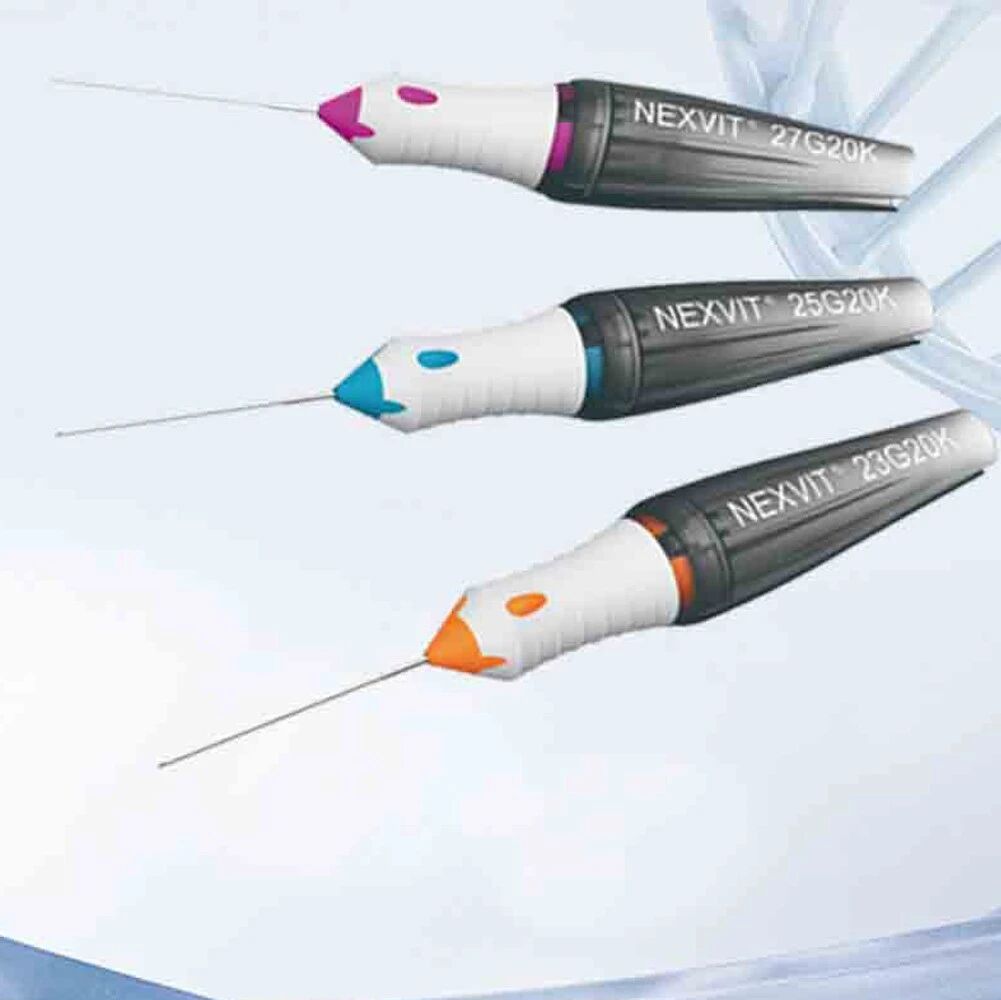编者按:曼哈顿眼耳咽喉医院和纽约长老会医院的主治外科医生K. Bailey Freund教授,专攻视网膜疾病的诊断、治疗和护理,主要包括黄斑变性、糖尿病视网膜病变、视网膜血管和炎症疾病,是疑难疾病和罕见病方面的专家。在APVRS 2021会议上,他分享了难治眼底病的诊疗进展和国家临床试验的科技前沿。《国际眼科时讯》有幸邀请到K. Bailey Freund教授,就老年性黄斑变性、中央性浆液性视网膜病变的治疗药物研发和给药新机制分享了相关领域的研究亮点,探讨了最先进的诊断和视网膜成像技术在临床中的应用。
AMD和PCV领域的研究亮点
K. Bailey Freund教授指出,随着对视网膜疾病的病理生理学相关认识的加深,主流观点认为AMD和PCV与脉络膜静脉功能不全相关。这一机制能够帮助医生更好的理解,肥厚型脉络膜疾病如何引起患者的眼底异常;有助于帮助医生找到更好的治疗方法,改善相关疾病导致的视力下降。相关研究人员强调了通过细化治疗策略、制定个性化药物治疗方案、持续开发更好的治疗药物和新的给药机制,达到长时间内维持患者视力的目的。
In our session, I thought that all the presentations were excellent and thought-provoking. I was very pleased to see that several of my colleagues, including Drs Chhablani, Cheung and Lee, have made great progress in refining our understanding of the pathophysiology of pachychoroid disease, which I think many of us have a growing realization that this is primarily related to choroidal venous insufficiency, and this is due to a downstream resistance at the vortex vein ampulla. Understanding this mechanism will likely lead to better understanding of how pachychoroid disease influences the fundus abnormalities we see in our patients, like the acquired vitelliform lesions that were nicely shown by Dr Won Ki Lee. This insight should help find better treatments for patients with vision loss to this disease mechanism. The other big focus in the symposium was the talks by Drs Koh, Arnold and Sadda, and they all addressed the critical importance of trying to maintain our patients’ vision over long durations by refining treatment strategies, individualizing drug treatment regimens, and then a continued focus on the development of better therapeutic agents and new delivery mechanisms.
超广域ICG血管造影术的应用
既往研究人员使用ICG血管造影术研究探索中心性浆液性视网膜病变,研究结果表明,肥厚型脉络膜疾病很大程度上受到了脉络膜静脉引流不平衡的影响。K. Bailey Freund教授及其团队通过对比患眼与正常对照组的超广域ICG血管造影发现,患病区域的脉络膜厚度增加,脉络膜血管通透性增强,并出现新生静脉血管。K. Bailey Freund教授及其团队的研究工作,为更好地理解疾病的发病机制及开发更好的治疗方法奠定了基础。
In my talk, I first try to review some of the ground-breaking work by prior investigators that used ICG angiography to study central serous chorioretinopathy. And then I continued by presenting the results of a recent study we did using ultra-wide field ICG angiography that showed that pachychoroid disease is very much influenced by an imbalance in the choroidal venous drainage to the vortex ampulla in the four quadrants. What we did is we compared ultra-wide field ICG angiograms from diseased eyes to a group of normal controls, and found that congestion in one or more of the vortex systems is what really seems to be associated with the primary findings of pachychoroid disease, which is regional choroidal thickness that corresponds to these dilated drainage routes, choroidal vascular permeability, and the remodeling of the venous drainage. Hopefully, with better understanding of this disease mechanism through work by our group, but also the excellent work by Gemmy Cheung, Rick Spaide and others, Jay Chhablani, who are all focused on this, we will develop better treatments for our patients.
nAMD的治疗发展
Adrian KOH教授关于“抗VEGF治疗新血管性AMD的挑战”的主题分享很全面的描述了当下AMD治疗技术的发展现状。目前,抗VEGF治疗是nAMD的一线治疗方法。虽然抗VEGF药物在治疗nAMD方面取得了一些良好的效果,但仍存在一些不足。未来,抗VEGF药物将朝着药效更持久、更新颖的给药方法发展,如最近在美国获得FDA批准的PDS给药系统。K. Bailey Freund教授认为,基因治疗持续进展,这可能为与抗VEGF药物或其他抗新生血管分子靶向途径药物,特别是补体靶向药物,联合治疗nAMD提供了更多可能性。
I think Dr Koh nicely describes what we will be seeing going forward. These will be: more durable anti-VEGF drugs that target more than one pathway; novel delivery methods such as the port delivery system (which recently gained FDA approval status in the United States); and I think we will also see continued progress in gene therapy that may allow the cells within the eye to produce protein-based therapeutics; and possibly combining anti-VEGF agents or other anti-neovascular agents with drugs that target other molecular pathways, in particular drugs that target the complement dysregulation that seems to drive some of the atrophies that we see that often affects vision even in the neovascular cases.
抗nAMD失明的关键
Jennifer ARNOLD教授关于新生血管性AMD管理的现实世界结果:来自抗视网膜盲计划的主题分享十分引人深思。Arnold教授做了一项非常出色的工作,重点分析了抗VEGF药物治疗nAMD的长期视觉结果,及导致疾病活动的生物标志物,包括有无积液和积液位置等临床特征。治疗方式在有视网膜下积液的眼睛表现出更好的效果,不仅仅是因为视网膜下积液本身,而是因为视网膜下积液主要发生于视网膜色素上皮变性或1型新生血管的患眼。继发于2型或3型RAP病变的患眼会出现视网膜中央凹下纤维化但不会有视网膜下积液。正如SADDA教授在他的报告中所提到的,1型新生血管在治疗后可以再现由于衰老而失去的原生绒毛膜。K. Bailey Freund教授指出,获得更好的视觉预后的关键不仅要考虑患者的生物标志物信息,更要关注疾病的组织病理学基础,从疾病根源保护视网膜组织。此外,最重要的是,保证黄斑的营养支持,维持黄斑的视功能。
Dr Arnold does a very nice job highlighting analyses of long-term visual outcomes for AMD treated with anti-VEGF therapy, which focused on traditional biomarkers for lesion activity that include the presence of fluid and whether that fluid is intraretinal or subretinal. Personally, I believe that the key to obtaining even better visual outcomes in our field is to think beyond some of these more traditional simple biomarkers and focus more on the underlying histologic basis for the preservation of retinal tissue, and most importantly, the need to maintain nutritional support for the central photoreceptors. Eyes with subretinal fluid do better, not just because of the subretinal fluid, but because it is really eyes that have sub-RPE or type 1 neovascularization that are the ones that have subretinal fluid. Eyes with subfoveal fibrosis secondary to type 2 or intraretinal type 3 RAP lesion would not have subretinal fluid. As Dr Sadda shows in his presentation, type 1 neovascularization can recapitulate the native choriocapillaris that has been lost through aging, and then these new vessels, which he refers to as the neochoriocapillaris, support the overlying photoreceptors for many years. So I predict that our best hope for preserving central vision in our patients will be to refine treatment regimens that innovate new strategies to promote and maintain a protective layer of type 1 neovascularization that could potentially protect our patients from central vision loss for the rest of their lives.
AMD和PCV领域的主要事件
K. Bailey Freund教授认为FDA批准的PDS给药系统是重要并值得期待的。FDA强调了该给药方式可能存在的安全问题,在应用该给药系统时必须非常小心,确保在最小并发症的前提下完成药物系统的植入。此外,根据今年公布的数据,K. Bailey Freund教授认为可能很快会看到Faricimab获得FDA批准,这是一种药效更持久的抗VEGF药物;也可能是第一种用于治疗视网膜萎缩的抗VEGF药物。虽然这种药物不能对所有的AMD和PCV疾病有效,但其在治疗中央凹萎缩的视网膜病变时疗效显著。
I think that the USFDA approval of port delivery is going to be interesting. It has some safety issues that are highlighted on the FDA label, so we have to be quite careful and ensure that the technique of insertion is done in a way that will minimize complications. I think it is possible that, based on data that came out this year, we may see approval for faricimab, another anti-VEGF agent that may be more durable, and even possibly, the approval of the first non-neovascular agent for atrophy. Although the results were not a complete home run, it definitely looked like the drug, a complement inhibitor, had a benefit, particularly in extrafoveal atrophy.
总的来说,随着对视网膜疾病认识的不断深入,对其发病机制了解的持续完善,将不断研发更有效的给药方式和药物类型,帮助患者获得更好的治疗效果和视功能预后。
专家简介
Bailey Freund
K.Bailey Freund教授专业从事所有视网膜疾病(包括黄斑变性、糖尿病视网膜病变、视网膜血管和炎症性疾病)患者的诊断、治疗和护理,是疑难疾病和罕见疾病的专家。作为视网膜疾病治疗的主要研究者,K.Bailey Freund教授一直处于关键国家临床试验的前沿,利用最先进的诊断和视网膜成像技术为患者提供最新的解决方案和治疗方法。K.Bailey Freund教授是纽约大学医学院眼科临床教授,是曼哈顿眼、耳、喉医院和纽约长老会医院的主治外科医生,他在本领域享有国际声誉,是视网膜协会、黄斑协会和美国视网膜专家协会的成员,是国际视网膜成像协会(IntRIS)的创始成员和受托人。K.Bailey Freund教授Retina杂志的编辑委员会成员,他撰写了400多篇经过同行评议的科学手稿,并撰写了许多书籍章节,并获得了许多奖项,包括著名的黄斑协会青年研究者奖和美国眼科学会高级成就奖。







 京公网安备 11010502033360号
京公网安备 11010502033360号
条评论
Linda Gareth
2015年3月6日, 下午2:51Donec ipsum diam, pretium maecenas mollis dapibus risus. Nullam tindun pulvinar at interdum eget, suscipit eget felis. Pellentesque est faucibus tincidunt risus id interdum primis orci cubilla gravida.